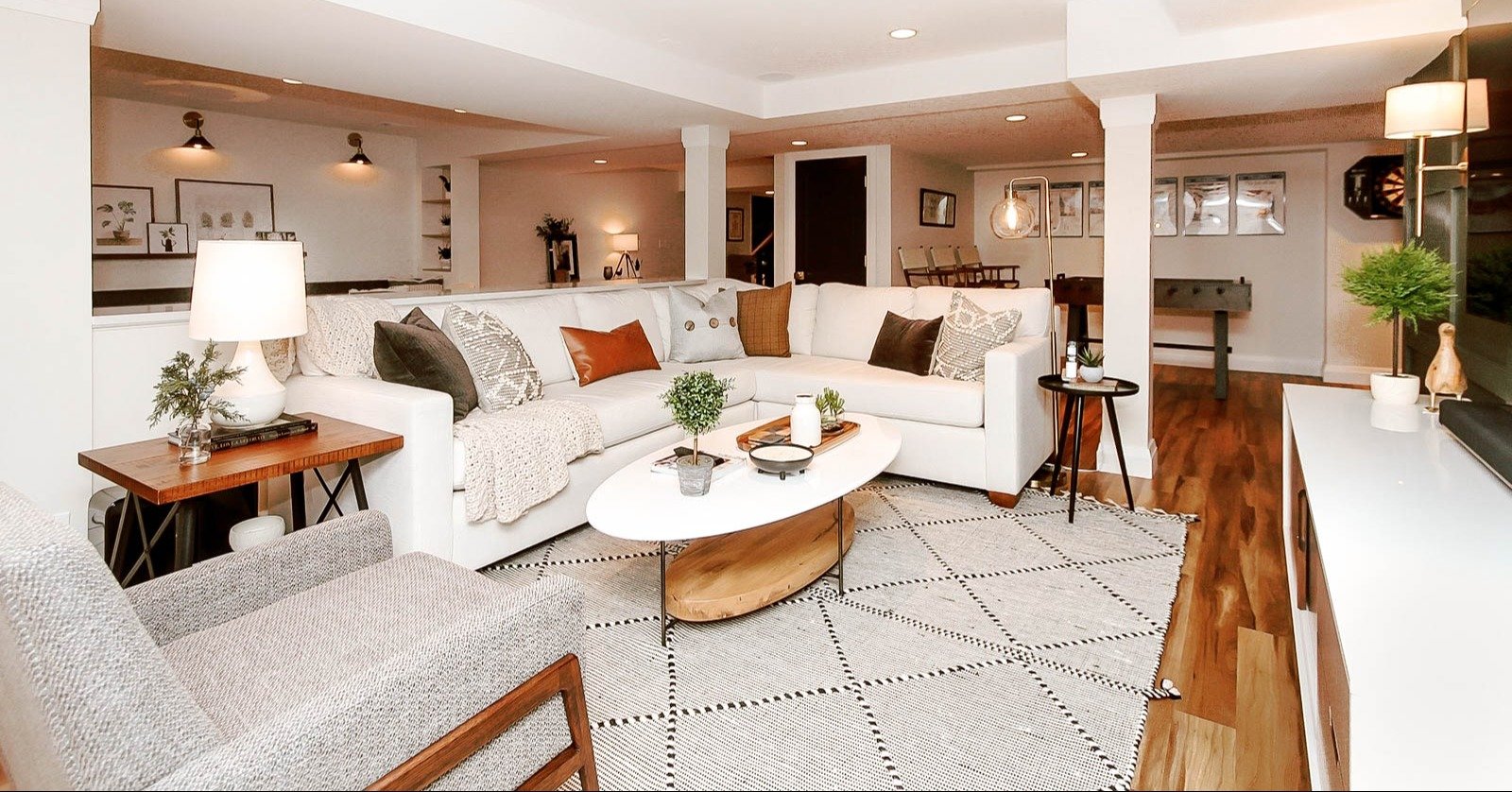Specialty Rooms: The Home Theater

Home theaters encompass a spectrum of possibilities, catering to various levels of functionality and aesthetics. From basic setups prioritizing technology to meticulously designed havens, the choice is yours.
To help you create a home theater that aligns with your needs and space, this checklist outlines several options to spark your imagination and guide your decision-making process.
#1 TV or Projector
The first crucial step is choosing between a TV and a projector, which significantly impacts cost and design.
TV
Pros: Often more affordable than projector setups.
Cons: Offers a less immersive experience compared to projectors.
Projector
Pros: Creates a more cinematic experience with larger screen sizes.
Cons: Typically requires a higher initial investment, including the screen and projector itself.
Remember: This choice sets the stage for your entire design, as the screen or TV will be the space's focal point.
# 2 Location
The location of your home theater is crucial, influencing both its functionality and aesthetics.
Basements
Pros: Basements often lack natural light, making them ideal for movie nights. They also offer the space for additional entertainment areas like a rec room or bar, creating a complete entertainment haven.
Cons: Wiring for sound might be more complex, and blackout curtains are essential for any windows.
Main or Upper Floor
While feasible, integrating blackout curtains into your design is vital. Additionally, ensuring proper sound system wiring is crucial. A simple setup with speakers facing the audience on either side of the screen can work well in smaller spaces.
Remember:
- Avoid over-designing the speaker setup for the size of your room.
- Prioritize functionality and aesthetics to create an immersive experience.
#3 Seating
Furnishing your home theater involves considering both comfort and functionality.
Permanent vs. Flexible Seating
- Permanent seating: Offers a custom-designed look but lacks flexibility for rearranging or using the space for other purposes.
- Furniture: Provides versatility for rearranging or using furniture in other areas. Chairs or couches can be arranged in rows, with elevated platforms in the back for improved sightlines.
Additional Considerations
- Chair selection: Opt for comfortable chairs or couches suitable for extended viewing sessions.
- Children's seating: Include bean bags or smaller chairs for children, keeping sightlines in mind. Remember, the goal is to balance comfort, functionality, and ensuring everyone can enjoy the viewing experience.
#4 Lighting
When it comes to lighting your home theater, the level of complexity is entirely up to you. Here are some popular options to consider:
- Recessed can lights with dimmers: A reliable and practical choice, offering adjustable brightness for different viewing experiences.
- Wall sconces: These add a touch of elegance reminiscent of traditional movie theaters, casting light upwards and downwards along the walls.
- Floor lighting: This creates a beautiful ambiance and improves safety, particularly if you have raised seating or uneven floors.
# 5 Decoration
The final element on our checklist is décor, where your imagination and budget can truly shine.
- Embrace Simplicity: Opt for a clean, dark-colored paint scheme and minimal accents for a sophisticated yet understated ambiance.
- Embrace Elaboration: Craft a truly immersive experience by incorporating a built-in proscenium, stage, and curtains framing your screen.
Remember, the level of detail is entirely up to you. Let your personal style guide your design decisions and transform your home theater into a space that reflects your unique personality.
Ready to transform your living space into a cinematic haven? Read this guide to learn how to plan your home renovation project and design your dream home theater: "The Ultimate Step-by-Step Home Renovation Transformation Guide."
Patrick A. Finn Service Area

